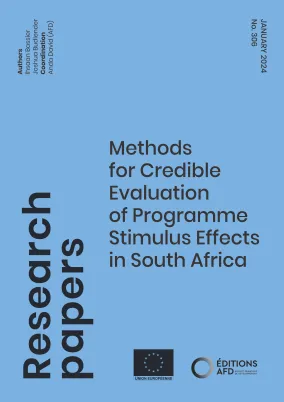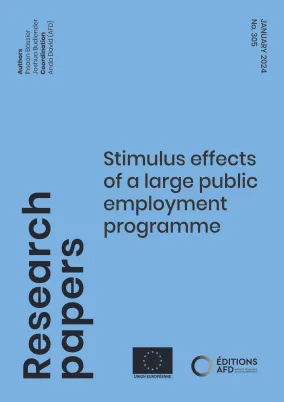Goal 10 calls on countries to adapt policies and legislation to increase the income share of the poorest 40% and to reduce wage inequalities based on gender, age, disability, social or ethnic origin, or religion. This includes promoting greater representation of developing countries in global decision-making.
 © AFD
© AFD
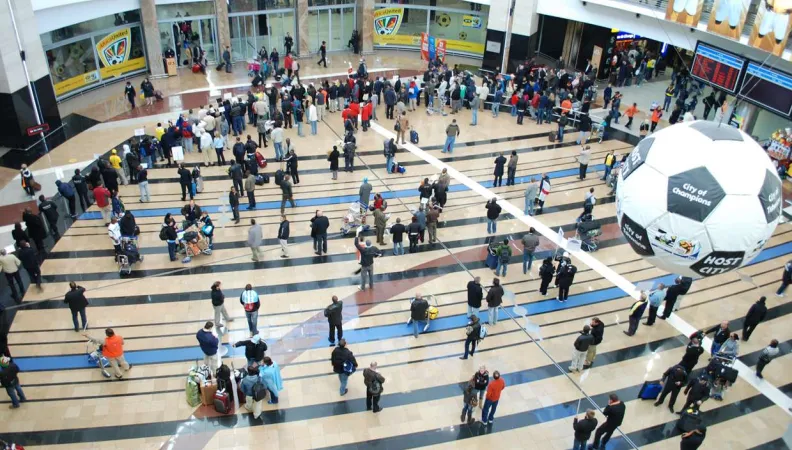 Legal notice EU (project) The fear that cash transfer programs (or social grants) can discourage labor market participation is common among policymakers locally and around the world, including in South Africa. To refute or confirm this fear, the Extension of the EU-AFD Research Facility on Inequalities worked with the Development Policy Research Unit (DPRU) of the University of Cape Town to analyze the impacts of the Covid-19 grant on labor market recovery and investment in productive activity in South Africa.
Legal notice EU (project) The fear that cash transfer programs (or social grants) can discourage labor market participation is common among policymakers locally and around the world, including in South Africa. To refute or confirm this fear, the Extension of the EU-AFD Research Facility on Inequalities worked with the Development Policy Research Unit (DPRU) of the University of Cape Town to analyze the impacts of the Covid-19 grant on labor market recovery and investment in productive activity in South Africa.
Context
In South Africa, the social grant system is relatively comprehensive in scope, directly benefiting one in three individuals, and mainly empowering the most vulnerable such as children, the elderly and people with disabilities from poor households. Despite the progressiveness of this system, there remains a lack of assistance to the unemployed, who are presumed to be able to support themselves through the labor market (Ferguson, 2015). However, such a view overlooks the widespread and structural nature of unemployment in South Africa, where over 70% of the unemployed have been unemployed for more than a year.
In this light, the expansion of the country's social grant system in response to the Covid-19 pandemic played an important role in filling this gap. On the margins of the system, a special Covid-19 grant of R350 was introduced to support this previously unreached and important group of unemployed adults. With one of the highest official unemployment rates in the world (32.6 percent in the first quarter of 2021), the grant was an important form of support for millions of vulnerable adults and was the first to use an explicit labor market eligibility criterion that could be considered a "labor market vulnerability transfer."
This project is part of the Extension of the EU-AFD Research Facility on Inequalities. Coordinated by AFD and financed by the European Commission, the Extension of the Facility will contribute to the development of public policies aimed at reducing inequalities in four countries: South Africa, Mexico, Colombia and Indonesia over the period 2021-2025.
Objectives
Conducted by the UCT-DPRU team, the objective of this research project was to quantitatively study whether the Covid-19 grant acted as a source of labor market recovery by leading to increased investment in productive labor market activities.
To do this, the research aimed to provide a detailed and quantitative descriptive analysis of transitions in labor market outcomes among Covid-19 grant recipients (measuring whether individuals moved from vulnerable to more productive activities, for example), as well as an analysis of the correlation between grant receipt and labor market outcomes. Finally, it estimated the causal effects of subsidy receipt on a range of productive labor market activities.
Method
The analysis exploited representative survey data collected during the pandemic in South Africa (from the National Income Dynamics Study: Coronavirus Rapid Mobile Survey, NIDS-CRAM) to answer the following cross-sectional and longitudinal questions about the role of the subsidy:
- What is the correlational relationship between receipt and job-seeking behavior, labor market participation, and the probability of finding a job ?
- What is the correlation between receipt of the subsidy and the transition from a relatively unproductive labor market state to a more productive state over time?
- Does this relationship vary across different groups and subgroups of recipients?
Research findings
You will find below the research paper related to this project:
Contact
 Legal notice EU (project) What have been the local stimulus effects of the South African Presidential Employment Stimulus Initiative (PES) and the national social grants program? The Extension of the EU-AFD Research Facility on Inequalities in partnership with SALDRU will seek to answer this question.
Legal notice EU (project) What have been the local stimulus effects of the South African Presidential Employment Stimulus Initiative (PES) and the national social grants program? The Extension of the EU-AFD Research Facility on Inequalities in partnership with SALDRU will seek to answer this question.
Context
The Covid-19 pandemic has forced societies around the world to make difficult trade-offs, as they try respond to the public health crisis on one hand, and to the economic and social distress arising out of it on the other. In South Africa, these combined crises have exacerbated already high levels of unemployment, deepening poverty and heightening levels of hunger and food insecurity.
To mitigate the combined health, social and economic crises stemming from the Covid pandemic, South African President Cyril Ramaphosa announced, in April 2020, a range of support measures to mitigate their impact, including emergency social protection and employment stimulus measures.
This project is part of the Extension of the EU-AFD Research Facility on Inequalities. Coordinated by AFD and financed by the European Commission, the Extension of the Facility will contribute to the development of public policies aimed at reducing inequalities in four countries: South Africa, Mexico, Colombia and Indonesia over the period 2021-2025.
Objectives
This research project aims to study the local stimulus effects of South Africa's PES and national social grants program. In order to do so, it brings together a wide range of existing and new data sources, such as shopper data provided by Shoprite Checkers and programme participant data from Harambee Youth Employment Accelerator, which are securely merged while preserving individual anonymity using local tech company Omnisient’s proprietary encryption technology.
The primary research focus will be on the multiplier effects of these two programs, that is, the effects of the programs on the economy beyond the direct impact of spending on program participants and their households.
These program-specific multiplier effects are crucial to the overall evaluation of the programs, particularly in the context of budget constraints, but are difficult to identify in a credible empirical manner given the lack of work on them in South Africa.
In studying them, this project thus has the dual objective of characterizing the spending patterns of stimulus beneficiaries and then examining how such spending is likely to stimulate economic activity in industries further up the product supply chain. Much of the analysis proposed is descriptive and extrapolative rather than causal when it comes to quantifying multiplier effects.
Thus, the overall goal of this research is to provide an incomplete but conservative and credible quantitative baseline for thinking about program-specific multipliers in South Africa, in an environment where such evidence is lacking.
Research findings
The publications and webinars related to this research project are available below.
You will find below the two research papers related to this project:
The project also organized two research conferences to present the results of the research. The replays are available below.
- SALDRU-AFD-EU Event: The stimulus effects of South Africa’s Basic Education Employment Initiative (February 7, 2024)
AFD, the EU Delegation in South Africa and SALDRU hosted a public event on the stimulus effects of the Presidential Youth Employment Initiative – Basic Education Employment Initiative (PYEI-BEEI) at the University of Cape Town.
The PYEI-BEEI programme, which targets 18-35 year-olds eligible as education assistants or general school assistants, is the largest component of South Africa’s Presidential Employment Stimulus (PES), announced in 2020 as one of the support measures against the impact of the COVID-19 pandemic.
The research was presented by Joshua Budlender (one of the project's researchers) and complemented by a presentation on the direct returns to learners in the classroom from the PES interns in the schools. Also under consideration is, as the PYEI-BEEI researchers conclude, whether other public spending (such as social grants) may have similar initial stimulus effects.
An interview with Josh Budlender is also available below:
- Research Conversations: Stimulus effects of public employment programmes (12 June 2024)
A webinar on the stimulus effects of public employment programmes with Anda David (AFD), Ihsaan Bassier (UCT-SALDRU) and Maikel Lieuw-Kie-Song (ILO) was also held.
Download the research papers
Contact
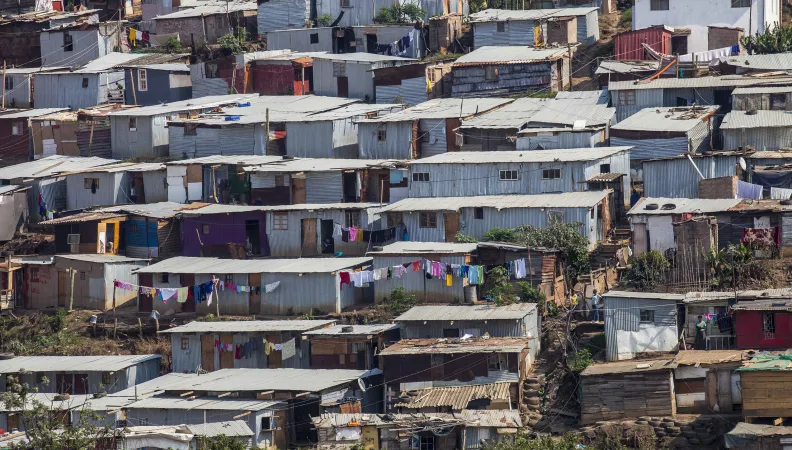 How can we better understand local realities and more particularly socio-economic outcomes at the community level? The Extension of the EU-AFD Research Facility on Inequalities in partnership with the Southern Africa Labour and Development Research Unit (University of Cape Town), and in close collaboration with local and national government entities, seeks to answer this question.
How can we better understand local realities and more particularly socio-economic outcomes at the community level? The Extension of the EU-AFD Research Facility on Inequalities in partnership with the Southern Africa Labour and Development Research Unit (University of Cape Town), and in close collaboration with local and national government entities, seeks to answer this question.
Context
South Africa’s spatial inequality translates in significantly different lived experiences among members of different communities across the country. Statistics South Africa gathers data on a range of socio-economic outcomes of individuals and households through an array of national surveys; these data can be analysed at the national, provincial, district and sometimes municipal level, and provide us with a sense of well-being, deprivation and inequities in these, between these different geographies. However, there is not yet one standardised set of data that would allow for a coherent, systematic and longer-term understanding, visualisation and tracking of a broad set of indicators on well-being, that allows for a better understanding of socio-economic outcomes at the community level. Yet, understanding this local context is important, as it is within that local reality that policies and interventions aim to make a difference. South Africa’s government has recognised this too and, with the introduction of its District Development (DD) Model, aims to see different spheres and departments of government work together for larger impact, “higher performance and accountability for coherent service delivery and development outcomes”. A consolidated, central point of information that is accurate and regularly updated, would provide a strong basis for the implementation South Africa’s DD Model.
This project therefore proposes the development of an interactive, online Community Explorer that would allow researchers, policy-makers and civil society members to build a stronger understanding of well-being at the community (or main area) level in South Africa. Such an understanding is crucial to inform development efforts implemented at that community level. We suggest drawing on the local level information for the Steve Tshwete municipality to pilot the Community Explorer approach.
The local municipality of Steve Tshwete is part of the Mpumalanga province, an area that is home to one of the country's largest coal mining areas and accounts for 83% of the coal produced in South Africa. Steve Tshwete can be considered as one of the commercial centers of this province, with one of the largest local economies in the district dominated by the mining, manufacturing and financial sectors. As such, coal mining and the three coal-fired power plants currently in operation are by far the largest contributor to local employment, accounting for 40% of it.
This project is part of the Extension of the EU-AFD Research Facility on Inequalities. Coordinated by AFD and financed by the European Commission, the Extension of the Research Facility will contribute to the development of public policies aimed at reducing inequalities in four countries: South Africa, Mexico, Colombia and Indonesia over the period 2021-2025.
Objectives
This project proposes to leverage the data and tools already available on the South African Youth Explorer (and the related WaziMap tool). The SA Youth Explorer is a SALDRU-led project that constructs and maps a range of indicators that measure key dimensions of well-being among young people, at various geographical levels. Using Census 2011 data, these indicators are currently constructed for the following domains: demographics, education, living environment, economic opportunities and youth poverty (including income poverty and multidimensional deprivation). In addition, the project has begun the construction, verification and maintenance of a central database of service provision, that allows for government-provided services to be mapped down to the main area level. Finally, it is the project’s aim to explore the possibilities of adding a third layer of knowledge with local labour market demand side information. As such, the overall aim of the proposed project is to provide “an understanding of the functionings of geographical areas as economic and social systems” and thereby “to promote the construction of an integrated and effective” approach to policy and planning that would ultimately contribute to the social betterment of all.
In addition, the project will use the administrative South African Revenue Service (SARS) and National Treasury (NT) Firm-Level (SARS-NT) Panel data developed as a joint SARS–National Treasury–UNU-WIDER initiative which gives matched employee-employer level information and thus allows computing labor market demand indicators. The greatest advantage of the administrative SARS–NT Panel data over other firm-level surveys is that it allows us to have employee-related information such as income, age and gender, as well as firm-level information such as labour costs, gross sales, industry sector, firm age, productivity, firm size, learnership and training cost . Another advantage of the administrative SARS–NT Panel data which is important for the project is that the worker and firm information can be aggregated to four different geographical levels, namely: province, district municipality, local municipality, and main place . With these geographical levels, it is possible to create local averages of various worker and firm variables that can then be mapped alongside Higher Education Institutes present at the local level.
Research findings
You will find below the two research papers related to this project:
- Developing a Youth Labour Market Index for South Africa at the sub-national level
- Youth and the just transition. A profile of young NEET in Mpumalanga
Contact
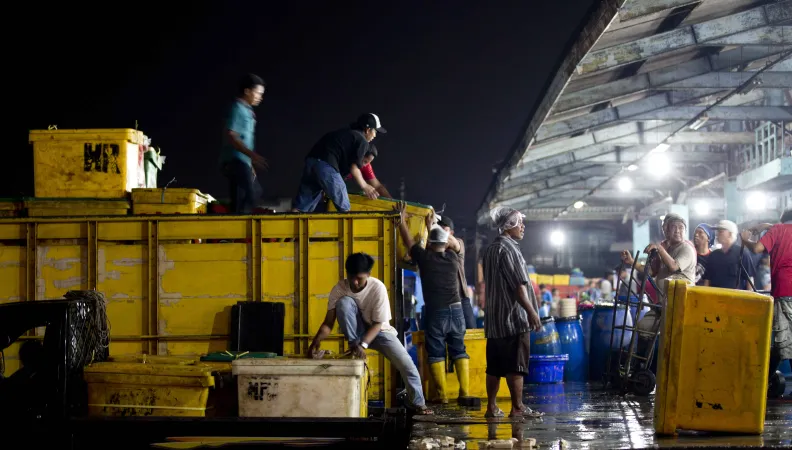 Legal notice EU (project) How to effectively reduce inequality in Indonesia? To answer this question, the Extension of the EU-AFD Research Facility on Inequalities is working with the local research center LPEM and the national statistical office BPS to produce a diagnosis that is essential to guide policy interventions towards reducing inequalities.
Legal notice EU (project) How to effectively reduce inequality in Indonesia? To answer this question, the Extension of the EU-AFD Research Facility on Inequalities is working with the local research center LPEM and the national statistical office BPS to produce a diagnosis that is essential to guide policy interventions towards reducing inequalities.
Context
In Indonesia, poverty has been declined since 2006 from 17.75% to 9.41% in 2019 due to strong economic growth and other poverty reduction efforts. The inequality, however, remains considerably high. Since 2010, Indonesia’s Gini ratio remains above 0.38. The poverty and inequality situation has been worsen post-pandemic. Indonesia’s headcount poverty rate back to double digit, 10.14% in 2021, while the Gini ratio climbed to 0.384, its highest rate since 2018. While focus on economic inequality is important, the picture of inequality in Indonesia should be assessed through a multi-dimensional aspect, not limited to households income or expenditure.
Indonesia is a fourth most-populous and also the largest archipelagic country in the world. It makes any policy context should be assessed carefully throughout population groups, income class, and geographical location due to the difference in the provision of public infrastructure and policy efforts within the country. As such, a comprehensive inequality diagnostic report is needed to assess overall condition of inequality in Indonesia not only using monetary indicator (income or expenditure), but also social assets, in terms of access to education, health, water and sanitation, employment, and other basic infrastructures needed for households.
The Extension of the Research Facility on Inequalities will cooperate with leading research center, LPEM FEB UI, and national statistical office, BPS, to conduct comprehensive inequality assessment and produce an inequality diagnostic report as the basis for launching a national dialogue about inequality and stimulate policy interventions to overcome inequality.
This project is part of the Extension of the EU-AFD Research Facility on Inequalities . Coordinated by AFD and financed by the European Commission, the Extension of the Facility will contribute to the development of public policies aimed at reducing inequalities in four countries: South Africa, Mexico, Colombia and Indonesia over the period 2021-2025.
Objectives
The objectives of the Inequality Diagnostic Research in Indonesia are:
- to produce a working paper which will consolidate data and resources (papers) around inequality issues to profile the prevailing situation of inequality in Indonesia.
- to conduct capacity building activities for national research center and the national statistical office in performing data analysis for the Inequality Diagnostic Research Report.
- to introduce specific tools for multidimensional inequalities diagnostic in Indonesia.
This research has led to a comprehensive Inequality Diagnostic Research Report in Indonesia and contributes to public debate and discussion on Inequality in Indonesia. Indeed, this project performed a thorough analysis of multi-dimensional aspect of inequality in Indonesia and a comprehensive breakdown based on income groups, geographical locations, and gender. It also includes analysis of prior policies that have been taken by the government to reduce inequality and how it performs overtime. The output of this research will help government to identify priorities and policy options in order to further reduce them.
Research findings
You will find below the research publications related to this project:
Read the press release
Other research projects supported by the Extension in Indonesia
Harnessing the benefits of inequalities reduction in marine protected areas in Indonesia
Completed
2022 - 2023

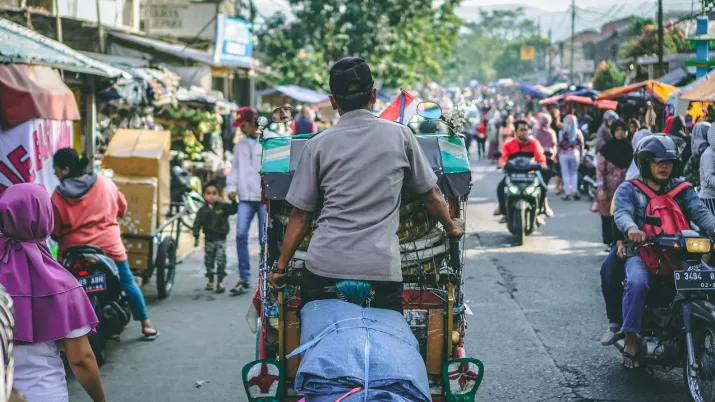
 Legal notice EU (project) What are the distributional effects of green taxes in Mexico and how can they be quantified? The Extension of the EU-AFD Research Facility on Inequalities program seeks to answer this in collaboration with RIBOS and the researches of the Laboratorio National de Politicas Publicas (LNPP) to provide to Mexican policymakers and stakeholders timely analyses of the effects of environmental tax policies on inequalities.
Legal notice EU (project) What are the distributional effects of green taxes in Mexico and how can they be quantified? The Extension of the EU-AFD Research Facility on Inequalities program seeks to answer this in collaboration with RIBOS and the researches of the Laboratorio National de Politicas Publicas (LNPP) to provide to Mexican policymakers and stakeholders timely analyses of the effects of environmental tax policies on inequalities.
Context
This research project proposes to estimate the distributive effect of gasoline taxes using a fiscal incidence considering these effects in the context of Mexico´s fiscal system, including the principal tax and spending instruments.
In 2014, Mexico’s Finance Ministry (SHCP) introduced a special tax (IEPS) on carbon as a green tax aimed at reducing the green gas emission associated with fossil fuels, mainly gasoline and diesel. However, the tax revenue (4699 million pesos in 2014) and the environmental impact of this tax are marginal: in the past decade, until 2014, this tax had a negative value, thus working as a subsidy. Since that year, it became a tax, which has grown significantly in recent years, representing close to 300 billion pesos in 2019 and 2020. This is therefore in effect by far the most important green tax implemented in Mexico today.
This analysis is of particular interest for Mexico at present because the transition from fuel subsidies to fuel taxes represents in effect the principal tax reform implemented in Mexico over the last decade in terms of both tax revenue (from -300 to +300 billion pesos in tax revenue) and distribution. Gasoline taxes have significant impacts on all the population, both directly on middle- and higher-income households through private transport, but especially indirectly for lower income households through public transport and transport costs for all goods and services, notably food. Preliminary analysis at the Fiscal Policy Equity Lab (FPEL) reveals that the increase in the indirect tax burden for the poor associated to gasoline taxes may reverse the effect poverty-reduction effect of direct transfers, even after their recent expansion.
Quantifying these impacts precisely will allow the design of compensatory instruments to protect the poorest and most vulnerable groups from the regressive effects of these taxes.
This project is part of the Extension of the EU-AFD Research Facility on Inequalities. Coordinated by AFD and financed by the European Commission, the Extension of the Facility will contribute to the development of public policies aimed at reducing inequalities in four countries: South Africa, Mexico, Colombia and Indonesia over the period 2021-2025.
Objectives
This project is a joint undertaking between RIBOS, CEQ Institute and LNPP. It seeks to estimate the effect of green taxes in the context of the overall Mexican tax system through the international methodology developed by the Commitment to Equity Institute (CEQI), using INEGI data from the Encuesta de Ingresos y Gastos de los Hogares (ENIGH) for 2014-2020, among other data sources.
This methodology will allow an estimation the effect of green taxes in the context of the overall fiscal system. This methodology facilitates comparability in time and space, and generates a wide variety of incidence indicators, including effects on the income Gini coefficient as well as income poverty using national and international poverty lines.
This project ultimately aims to provide Mexican policy makers and stakeholders with timely analyses of the effects of tax policies on inequality and poverty. The research conducted will therefore result in:
- a research paper,
- a policy brief whose analysis is based on the collaborative intelligence technique. Two sessions in which the model calibration and hypotheses will be discussed following the collaborative modeling framework. Participants in the sessions will be members of the expert network and key tax policy makers.
Research findings
You will find below the research paper related to this project:
- Distributive impact of green taxes in Mexico (July 2024)
The policy brief related to this project will be published here soon.
Contact
 Legal notice EU (project) The Extension of the EU-AFD Research Facility on Inequalities in partnership with CEEY will design proposals for the design of care systems at level of federal states and of municipalities, which will further support the progress in reducing the inequalities and foster social mobility.
Legal notice EU (project) The Extension of the EU-AFD Research Facility on Inequalities in partnership with CEEY will design proposals for the design of care systems at level of federal states and of municipalities, which will further support the progress in reducing the inequalities and foster social mobility.
Context
This project is a follow-up of the research project developed by CEEY and El Colegio de México in the first phase of the EU-AFD Research Facility on Inequalities. The results showed the need for structural changes to break the bottlenecks of social mobility and reduce inequality in Mexico.
Based on the above, the new phase of the project focuses on the knowledge base that will inform the setting up of care systems in the states of Guanajuato and Nuevo Leon and in the municipality of San Pedro Garza Garcia.
Guaranteeing the right to care in the Constitution is essential to advance on the basis of social consensus. In order to define the articulation mechanisms in a law, it is necessary to understand the care systems at different levels as transversal and multipurpose policies that are worth discussing collectively, as they imply much more than the already great challenge of expanding the existing infrastructure of services and social spending. The Care Economy also implies creating fiscal strategies to redistribute paid and unpaid work, adapted policies for those who require care and for caregivers, social co-responsibility and co-responsibility of the private sector.
Therefore, it requires more and better statistical information, strengthening surveys and data systems, as well as developing studies to make visible the interdependence of care with multiple agendas, identifying care needs and their characteristics, available supply and unmet demand, allowing for strategic planning and follow-up from the short to the long term, starting with priority groups that include children, people with disabilities, the sick and elderly, and their caregivers.
This project is part of the Extension of the EU-AFD Research Facility on Inequalities. Coordinated by AFD and financed by the European Commission, the Extension of the Facility will contribute to the development of public policies aimed at reducing inequalities in four countries: South Africa, Mexico, Colombia and Indonesia over the period 2021-2025.
Objectives
Given the above context, the objective of this project is the construction of two products that address two identified needs:
- a design proposal for a state and municipal-level care system: it is necessary to develop a care system designs that address the structural inequalities for which their creation is sought. In this sense, it is necessary to establish a complete, functional and sustainable design.
- a proposal for the collection and systematization of primary information for the design and/or monitoring of the care system: a second need arises from the above in terms of systematization of primary and administrative information that feeds, as far as possible, the original design of the care systems, as well as their monitoring over time.
Research findings
You will find below the research papers related to this project:
- Social mobility, care policies and social protection (August 2024)
- Social mobility, care policies and social protection policies in Nuevo León (September 2024)
Contact
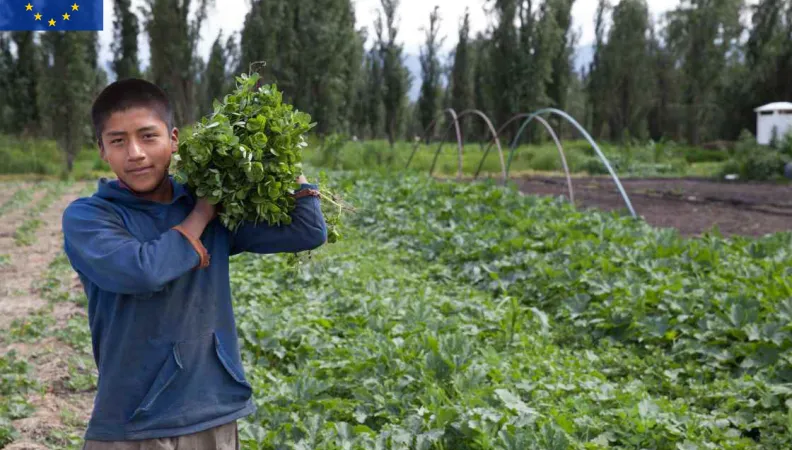 Latin America is one of the regions with the highest economic inequality in the world. Moreover, Mexico shows one of the highest levels of such kind of inequality within the region. Even public official data report a decrease in such level for the last 25 years, such reduction was less than insignificant. It has to be noted, as well, that right now an academic and public discussion related to potential underestimation of economic inequality is taking place in the country.
Latin America is one of the regions with the highest economic inequality in the world. Moreover, Mexico shows one of the highest levels of such kind of inequality within the region. Even public official data report a decrease in such level for the last 25 years, such reduction was less than insignificant. It has to be noted, as well, that right now an academic and public discussion related to potential underestimation of economic inequality is taking place in the country.
Context
In Mexico, more than 40 percent of the population is under the official poverty line. At the same time, Mexico is characterized by a society in which the socioeconomic origin condition is highly related to life achievement, especially on the extremes of the socioeconomic distribution (Vélez-Grajales et al, 2014). On this matter, empirical evidence shows that once the population is divided by quintiles, 48 out of 100 that were born in the lowest quintile stay there for the rest of their lives. Above the rest of them, i.e. those who are able to move to another quintile, 22 reach the second quintile. In summary, previous result leaves in poverty 70 percent of those with origin in the first quintile. It has to be noted that only 4 out of 100 that were born in the lowest quintile will move up to the top quintile.
On the other hand, above those that were born in the top quintile, 52 out of each 100 stay there for the rest of their lives. Moreover, above those that experience downward mobility, 28 out of each 100 move to the fourth quintile, i.e., 80 out of each 100 that were born in the top quintile will stay at least in the fourth quintile. Finally, it has to be noted that only 2 out of 100 that were born in the top quintile will move down to the lowest quintile. This means social mobility is very low.
This project is part of the first phase of the Research Facility on Inequalities, coordinated by AFD and funded by the European Commission's Directorate-General for International Partnerships over the 2017-2020 period. The first phase of the Facility has led to the conduct of 22 research projects and the publication of around 100 research papers and policy briefs.
Goal
How are economic inequality and social mobility related? Is it possible that the highest levels of socioeconomic persistence (lower social mobility) in terms of origin determined, in part, both perception and tolerance against economic inequality? The Mexican case, which is one where socioeconomic regional disparities are significant, represents a good option to analyze if such relationship holds. Moreover, there is still a gap in the literature for explaining the mechanisms behind the observed negative relationship.
Additionally, an important and relevant unanswered question for the Mexican case is the perception of Mexicans about inequality and social mobility levels. What if Mexicans think that the country is one of equal opportunities and results for all? Policy implications should be different among different perception scenarios. In any case, it is necessary to get information in order to understand the mechanisms at household and local level that explain the potential distance between perception and reality.
Method
First, using a multivariate analysis method, relative intergenerational mobility can be estimated for each macro-region of the country. Several inequality measures will be estimated, but for several points in time. The researchers have chosen to do so because it is possible that not current but origin economic inequality is the relevant one for intergenerational social mobility. Once the relationship is estimated, a discussion on the mechanisms behind it should be developed. The empirical analysis will be mainly based on the “Encuesta ESRU de Movilidad Social en México 2017”.
Additionally, work with groups in 4 different cities with different levels of socioeconomic performance will be held. The researchers expect to do fieldwork in at least two different spots within each city: one for a group of medium-high socioeconomic level and one of medium-low socioeconomic level. The interview will include a measure for both inequality and social mobility. In such a way, the researchers will be able to understand in a better way the relationship between perceptions and objective measures on the variables of research interest.
See this project's 2 minutes pitch from Alice Krozer, researcher at Colegio de México:
Results
You may find the research papers and the policy briefs linked to this project here :
Research papers:
- Social mobility in Mexico. What can we learn from its regional variation?
- Perceptions of inequality and social mobility in Mexico
Policy briefs:
- Wide regional differences in social mobility across Mexico
- Inaccurate public perceptions of inequality and social mobility in Mexico
Find the presentation of the research paper "Perceptions of inequality and social mobility in Mexico" by Aurora Ramirez Alvarez (Colegio de Mexico) during the first webinar of the Research Facility on Inequalities:
Contact:
- Anda David, Research Officer, AFD.
Contacto:
Anda David, coordinadora de investigación, AFD.


